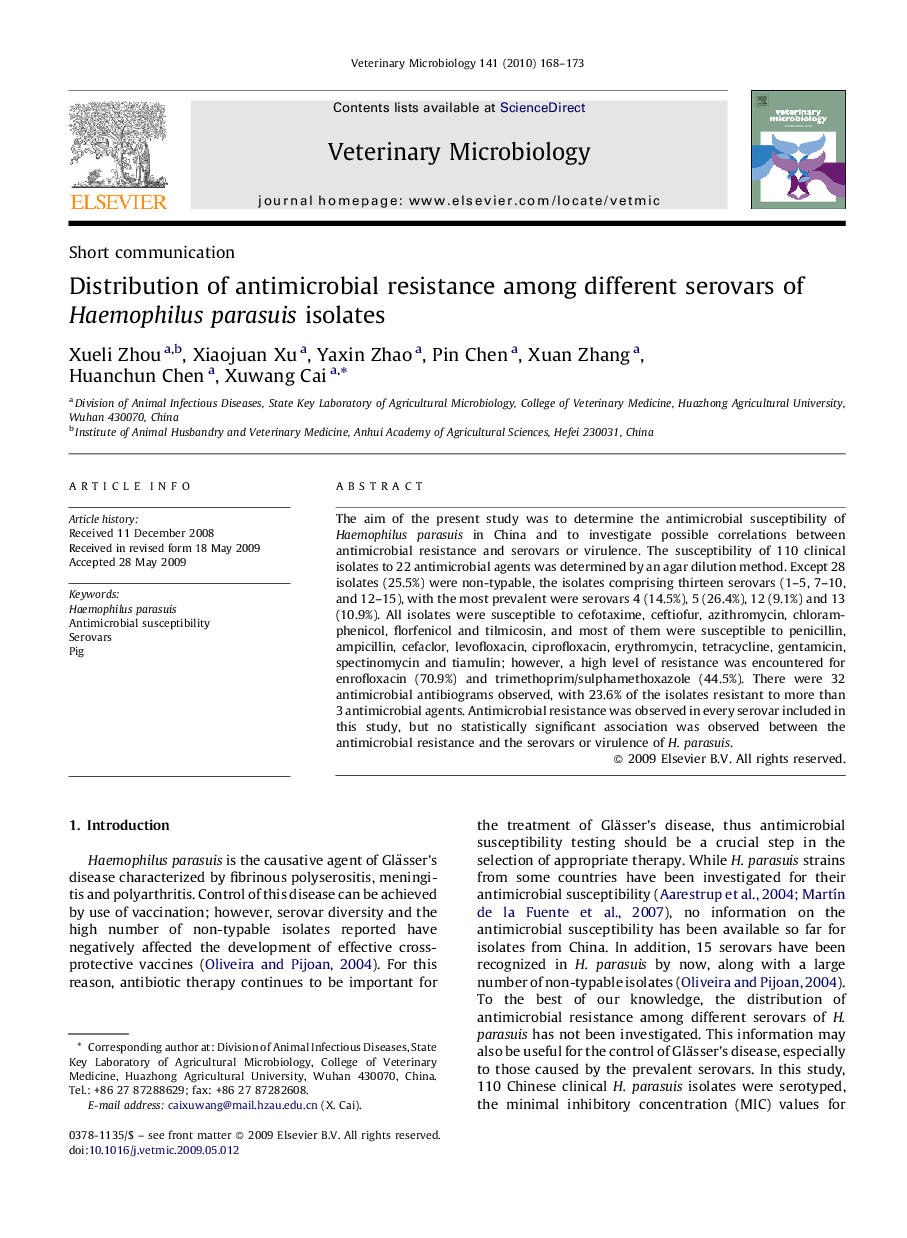| Article ID | Journal | Published Year | Pages | File Type |
|---|---|---|---|---|
| 2468000 | Veterinary Microbiology | 2010 | 6 Pages |
The aim of the present study was to determine the antimicrobial susceptibility of Haemophilus parasuis in China and to investigate possible correlations between antimicrobial resistance and serovars or virulence. The susceptibility of 110 clinical isolates to 22 antimicrobial agents was determined by an agar dilution method. Except 28 isolates (25.5%) were non-typable, the isolates comprising thirteen serovars (1–5, 7–10, and 12–15), with the most prevalent were serovars 4 (14.5%), 5 (26.4%), 12 (9.1%) and 13 (10.9%). All isolates were susceptible to cefotaxime, ceftiofur, azithromycin, chloramphenicol, florfenicol and tilmicosin, and most of them were susceptible to penicillin, ampicillin, cefaclor, levofloxacin, ciprofloxacin, erythromycin, tetracycline, gentamicin, spectinomycin and tiamulin; however, a high level of resistance was encountered for enrofloxacin (70.9%) and trimethoprim/sulphamethoxazole (44.5%). There were 32 antimicrobial antibiograms observed, with 23.6% of the isolates resistant to more than 3 antimicrobial agents. Antimicrobial resistance was observed in every serovar included in this study, but no statistically significant association was observed between the antimicrobial resistance and the serovars or virulence of H. parasuis.
